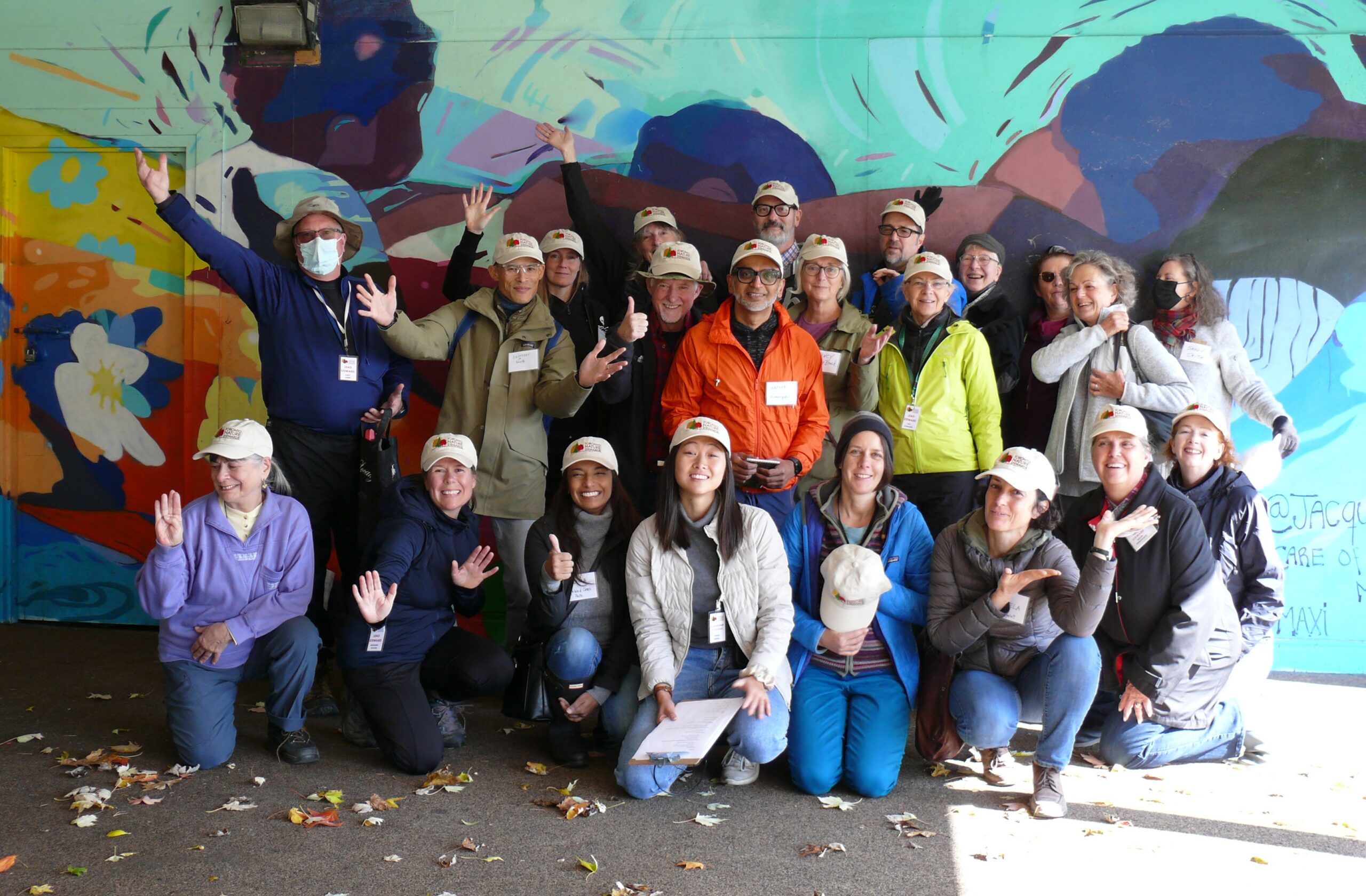If you have other ideas for getting involved or partnering with us, please reach out to us at coordinator@torontonaturestewards.org.
Become a Lead Steward
Registration requests for 2026 Lead Steward training are now closed. Registered Lead Stewards in Training (LSITs) will be contacted in the new year.
All of our ravines and natural areas need stewardship, so please consider becoming a Lead Steward. Priority for Lead Steward training is given to those who have some experience in stewardship or a strong interest in leading a group in an under-served community. If you know of anyone who may be interested, please send them a link to this page. Join with a friend and stewarding will be even more rewarding!
You can find maps and schedules of our current sites here. If you would like to gain some experience first, feel free to join a site as a Steward – they would love to have you on the team.
Here is an excellent article from 2022 where one of our volunteers paints a picture of the Lead Steward experience and offers advice on the skills for success. Or you can check out this testimonial to hear some first-hand experience: “My Experience As a First-Year Lead Steward”
What are the responsibilities of a Lead Steward?
- Making a stewardship plan for their site
- Recruiting and leading a team of volunteer Stewards (maximum 10 Stewards per Lead Steward)
- Organizing work days by planning activities, sending emails, and adhering to protocols
- Reporting activities, number of attendees, and plant monitoring
- Committing approximately 3 hours/week (2 hours in the field + 0.5 hour administration) from the end of April through October (co-Lead Stewards can help manage the site during vacations)
From February to March, Lead Stewards will receive five online sessions of 2-hour training and hands-on learning opportunities. This process will guide Lead Stewards on making a stewardship plan for their site, recruiting new Stewards, organizing events, and identifying plants. If you would like to learn more about Lead Steward Training, check out our Lead Steward Training Info Session recording from 2024.
Have further questions? We will be hosting a live online Lead Steward Training Information Session on Wednesday, November 19, from 6:00-7:00 PM at https://utoronto.zoom.us/j/89830206150
Apply for a Stewardship Site
Site Criteria
The City’s approval of applications for new sites and extensions will be based on the following:
- Site is on publicly accessible City land under Parks and Recreation management
- Site is naturalized (not manicured areas like turf or horticulture beds)
- Site is not:
- An area with planned or ongoing capital construction or similar projects
- An existing City Community Stewardship Program (CSP) site
- A designated Environmentally Significant Area (ESA), Provincially Significant Wetland (PSW), Area or Natural Scientific Interest (ANSI) or Area of Archaeological Sensitivity
- An area where ecological restoration work (e.g. invasive species management, naturalization planting) that is incompatible with TNS activities is being undertaken by City of Toronto Urban Forestry staff.
- Site does not involve work on steep slopes or open water
- Site applications for sites larger than 5 ha will be discussed for approval on a case-by-case basis
Site Application Process
Site applications for the 2026 season are now closed.
If you are not a Lead Steward and would like to start a new site in 2026, please note that we generally require there to be at least one (ideally 2+) community members willing to commit to taking our winter Lead Steward Training (see below) to lead stewardship events at the site during the year. Though we appreciate those who propose sites in their area, new sites without people eager to lead stewardship there in the coming season are unlikely to be approved.
Those interested in starting a new site in 2026 downloaded, filled in, and sent a TNS New Site Application Form to luke.kwong@torontonaturestewards.org, ensuring that sites met all criteria listed above, as much as possible. The deadline for 2026 site applications was Sunday, August 31.

